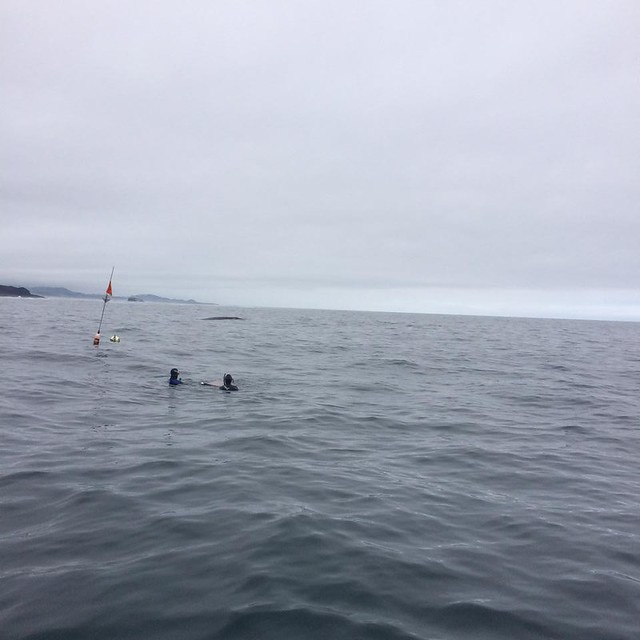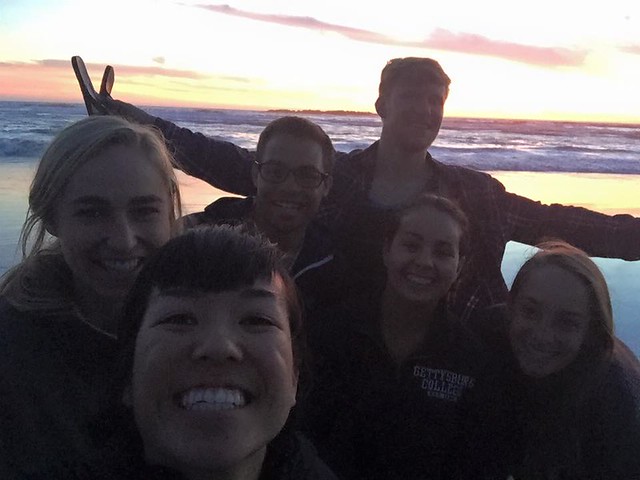When looking back on my childhood, I could easily tell you that my love for whales began right here in Newport at the Oregon Coast Aquarium. Like any native Oregonian kid in the 90’s, I fan girled hardcore for Keiko the whale (Aka: Freewilly) and would harass my parents constantly to go visit him in the aquarium. I knew then that I wanted my future career to be focused around marine animals, especially whales…
Monday began with another SMURFing trip that occurs every two weeks. As I talked about before, it was an amazing experience and I was excited to do it again. This time, I did not suit up and get in the water, but instead helped to collect data and extract the juvenile fish from the SMURF. Although, this time we didn’t only see juvenile fish, we saw a whale! It was a crazy sight and came so close to Sara and Dani who were retrieving the SMURF. I wasn’t even in the water and I thought that it was so incredible! This experience just solidified why I love marine science (and whales) so much.
The rest of the week consisted of more sea star monitoring. This time, Sara and I worked with a team from UC Santa Cruz on Wednesday and Thursday. Again this was awesome, and the getting my hands dirty was great, yet unfortunately the 4 am wake up each day was a struggle. Waking up and being at work when it is still dark out is the weirdest experience although I still really enjoyed it. The fact that three of my work days this week consisted of field work was a win and also on Friday we were able to go to the aquarium for our mid Summer check in with Sea Grant! I was able to put my rockfish speices I.D to the test while wandering the aquarium and check out some sea lions and otters. They also had great fudge in the gift shop. They get an A plus in my book. Friday was also very humbling in the fact that it helped me to realize that I need to brush up on my public speaking. A workshop was held on scientific communication and speaking in front of everyone was actually quite terrifying to me. It is definitely something I must overcome and I’m glad we had the workshop.
Finally, I would like to say that I am in awe that we are in week six now. I have had a great experience so far and I am looking forward to the last half of the summer and continue hanging out with my fellow interns!
















